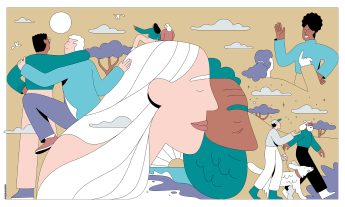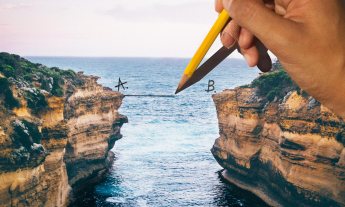From his latest book you wouldn’t guess that photographer Robert Leslie was born in England. Stormbelt transports you across America the way only a homegrown native could, taking you down Route 66 past golden, rusty waves of sand and dust. Leslie captures abandoned car lots, foreclosed homes and forgotten billboards with pathos, giving life to the disillusionment he saw in the aftermath of the excitement and hope of President Obama’s inauguration in 2009.
Over four years Leslie covered 10,000 miles in the American Sunbelt on two different road trips. In the process he became fascinated with the place he had visited so many times but had never explored so deeply. He tells TED: “Whether the American dream is or isn’t real, it’s still a magnet because of what it represents. Thank God that exists. Even if America is filled with so many contradictions, I always find that melting pot of ingredients worth pursuing.” Below see eight images from Stormbelt, with quotes about the trip from Leslie.
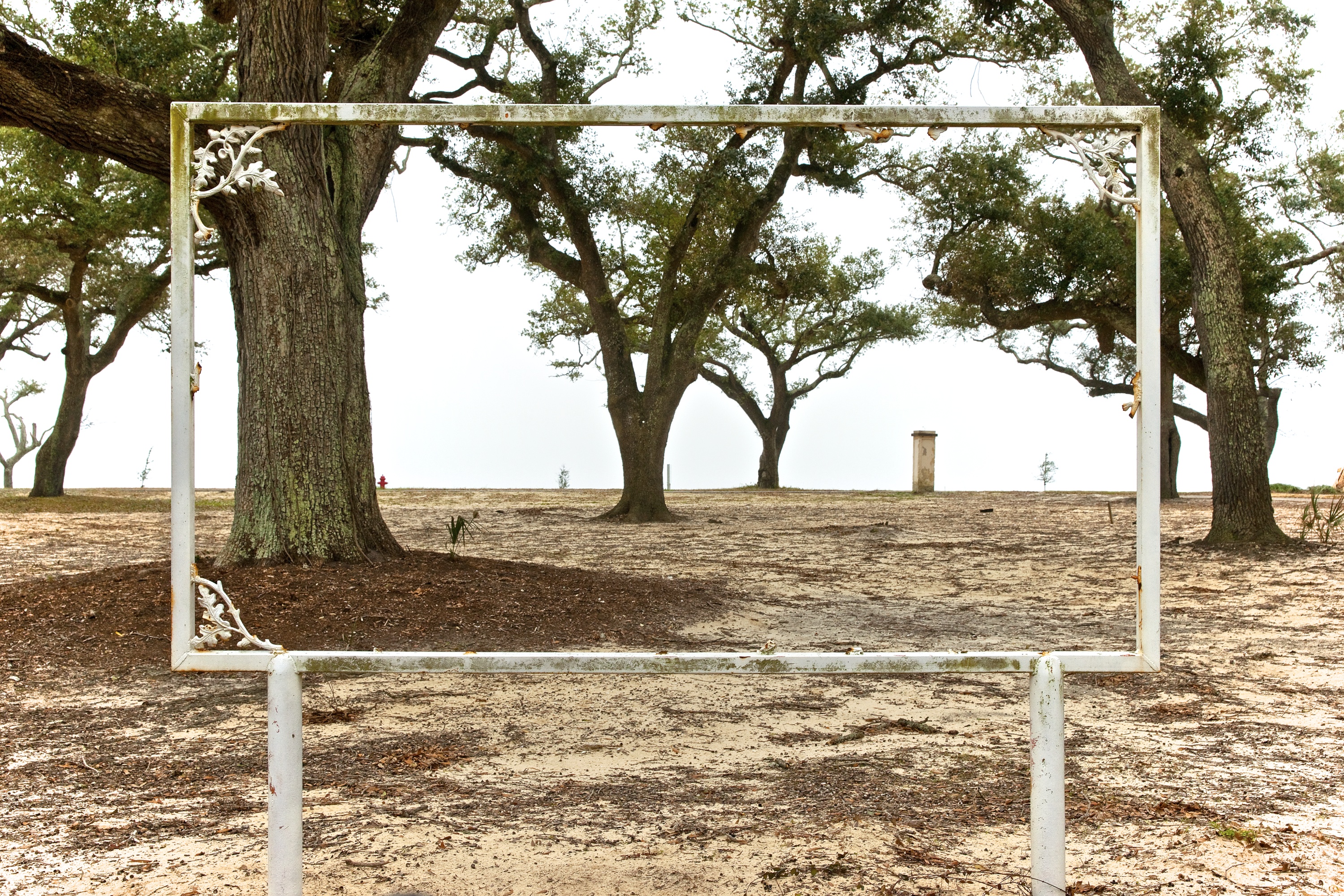
Welcome to the University of Southern Mississippi
“This had been the welcome board at the university. That area was completely wiped out by Hurricane Katrina,” says Leslie. “The trees behind are known as ‘Friendship Oaks,’ and it’s estimated that they were growing at the time Columbus arrived in America. So this is an observation on the permanence of the trees and the transience of humanity.”
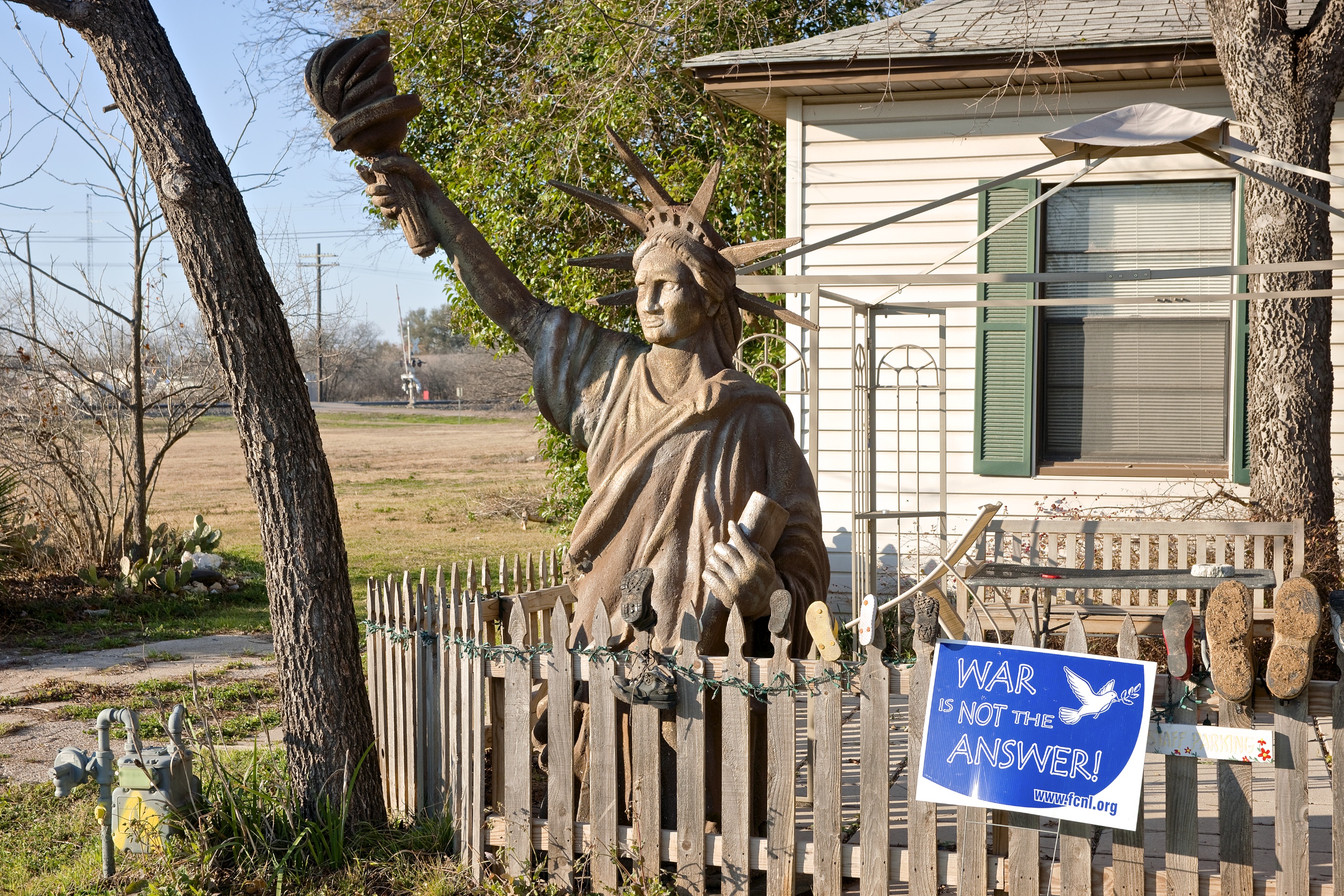
A “Peace House” in Texas
“This was an anti-war campaigner’s home in Crawford, Texas, featuring the Statue of Liberty and the sign, ‘War is not the answer!’” says Leslie.
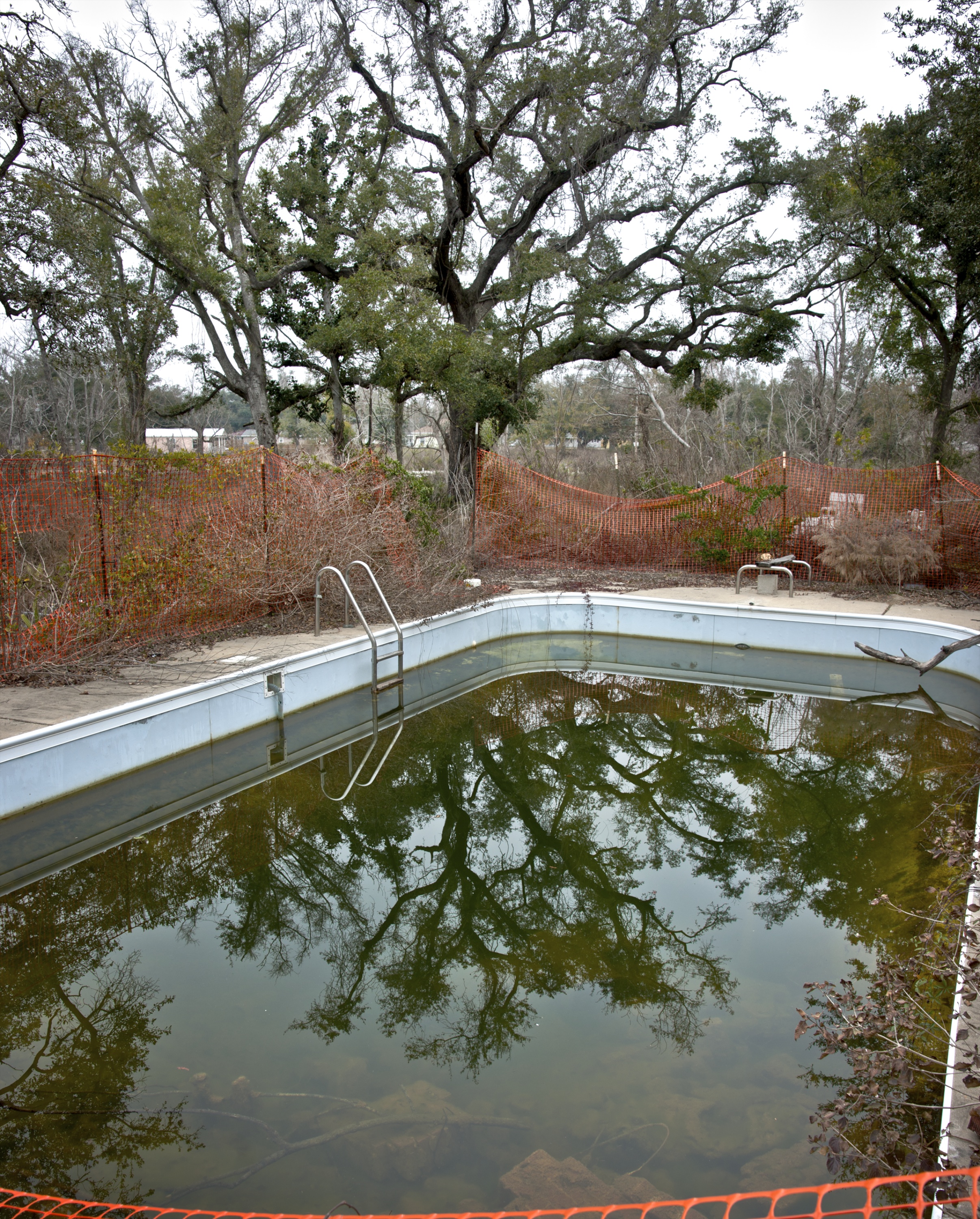
The abandoned wreckage of Hurricane Katrina
“A residential swimming pool in Biloxi, Mississippi, destroyed by Hurricane Katrina,” says Leslie of this image, which he shot three years after the storm — even then many of the neighborhoods and communities had not been cleared. “Many residential and secondary homes on the Gulf Coast were distorted with all their contents dispersed over miles of the coast. I felt like an archaeologist sifting through all the belongings of middle class, well-to-do families’ holiday homes. As it was on a beach, you’d find so many material belongings buried in sand, like the Egyptian tombs.”
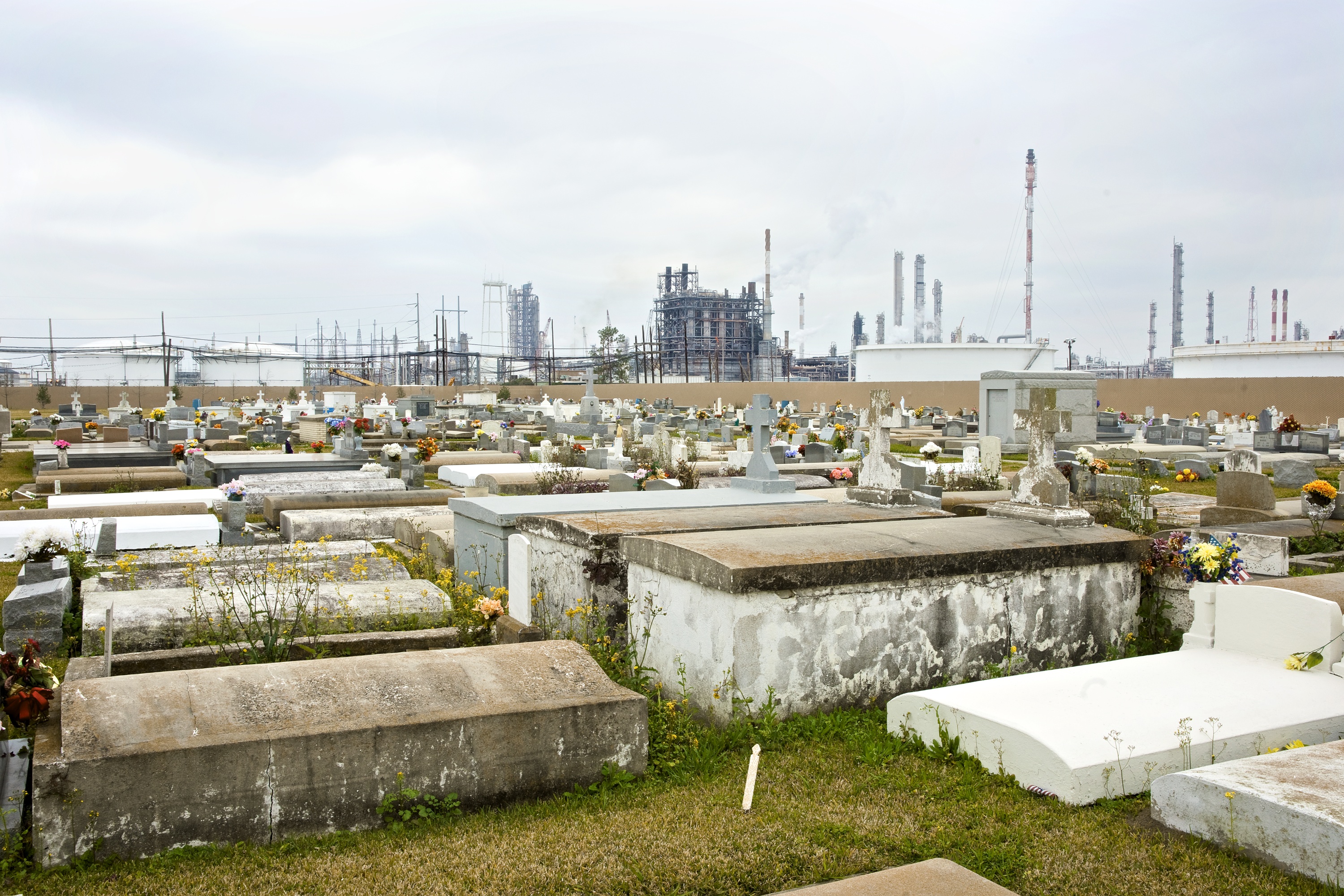
Taft, Louisiana. Population: Zero
“Phosphate-mining rigs loom behind stone tombs in the cemetery of Our Lady of the Holy Rosary in Taft, Louisiana,” says Leslie. “The official population of that town today? Zero.”
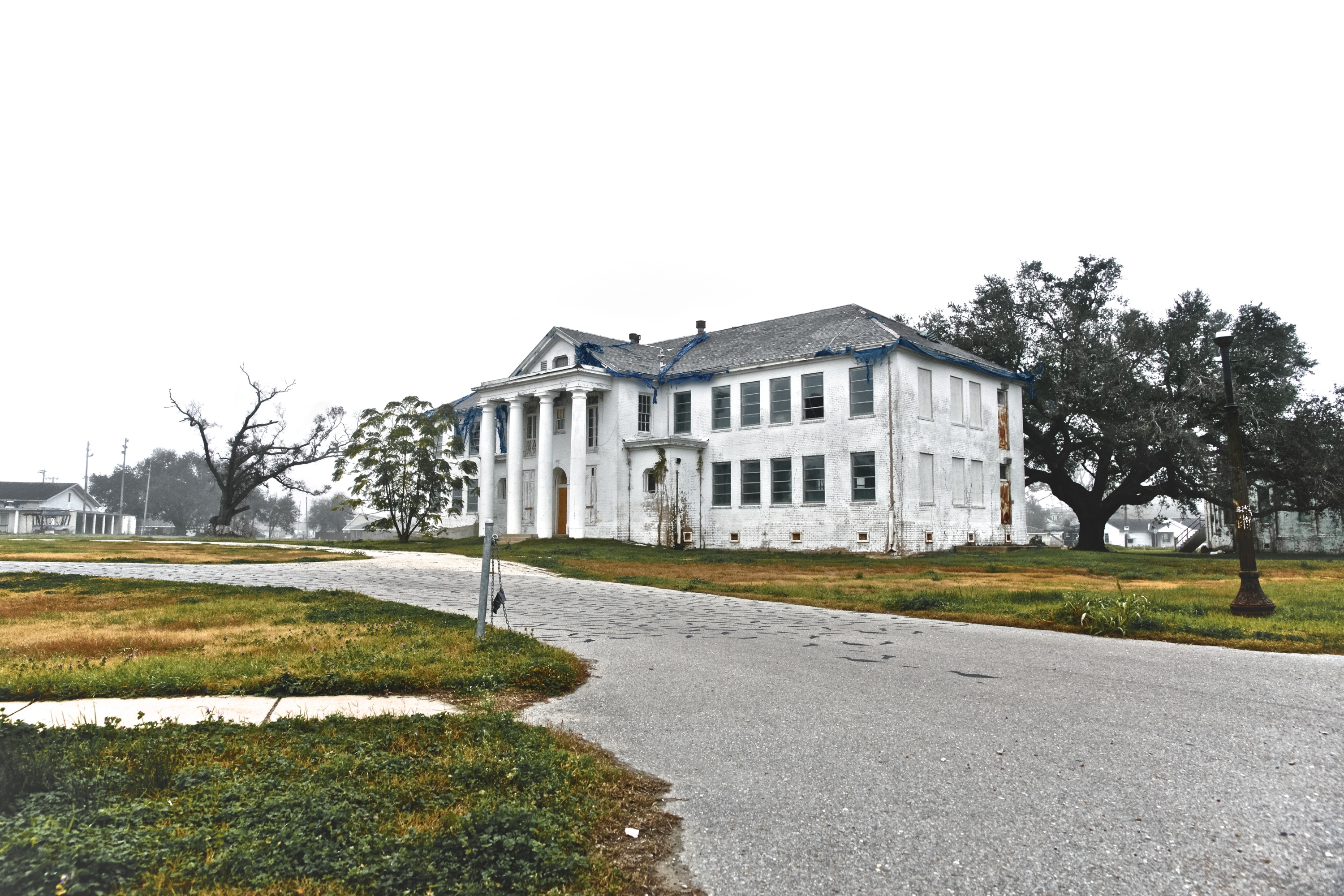
The former seat of the economy: Plantations
“A ruined plantation home on the outskirts of New Orleans, Louisiana. It was damaged by Hurricane Katrina and has been in a state of disrepair ever since,” says Leslie. “This and the previous image present aspects of the economic motors of the region, past and present. Back in the day, 150 to 300 years ago, it was plantations, and now it’s the petrochemical industry moving all of their goods through the center of the U.S. out through New Orleans into the Gulf area.”
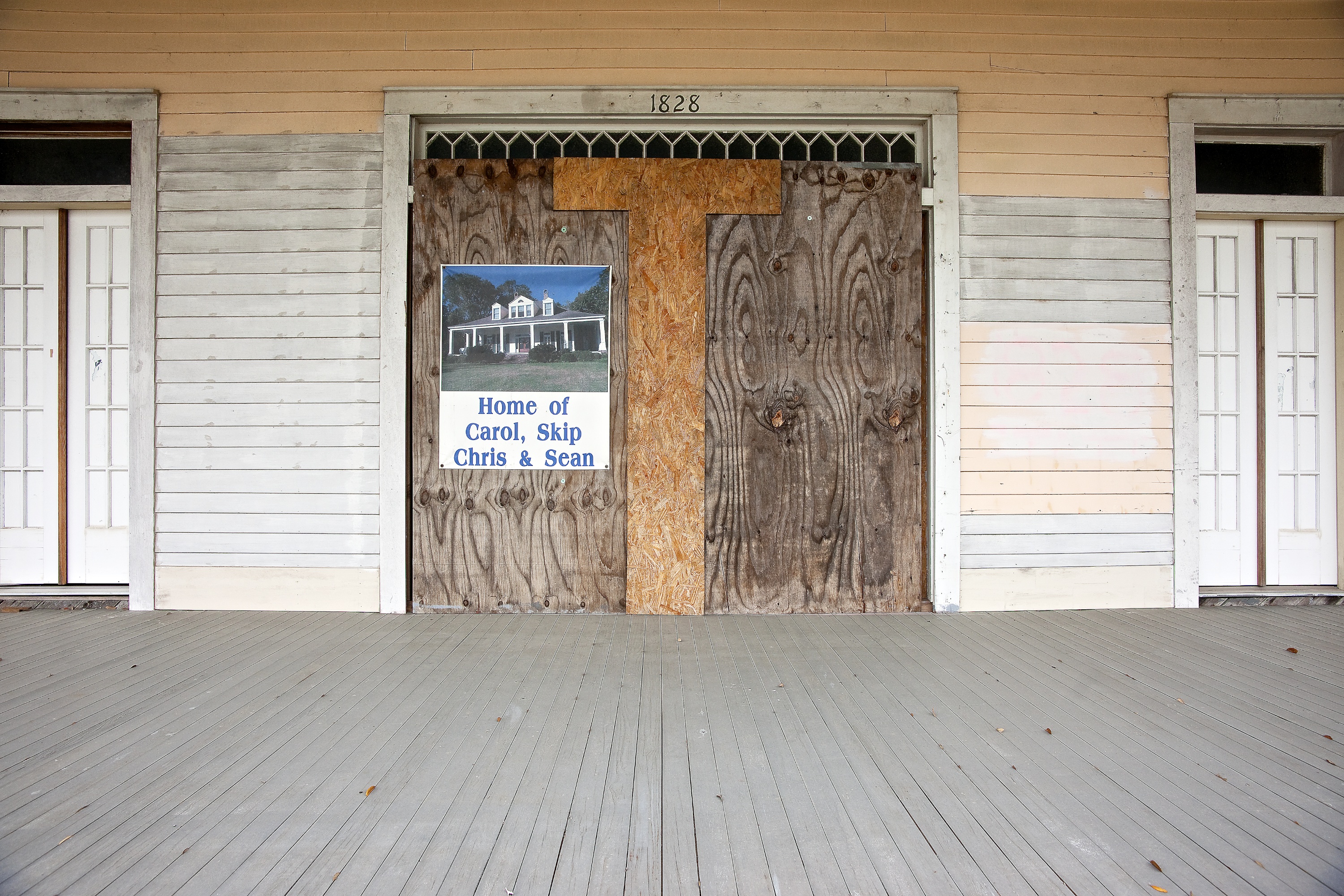
The home of Carol, Skip, Chris & Sean
“This home is along the same strip of coast as the university and pool, in Biloxi, Mississippi,” says Leslie. “Many luxury homes had been the feature of this line of pure white sand beachfront prior to the arrival of Katrina. When I returned to the site in late 2011, this location had been restored and renovated. Many others though had been bulldozed, or just left to decay.”
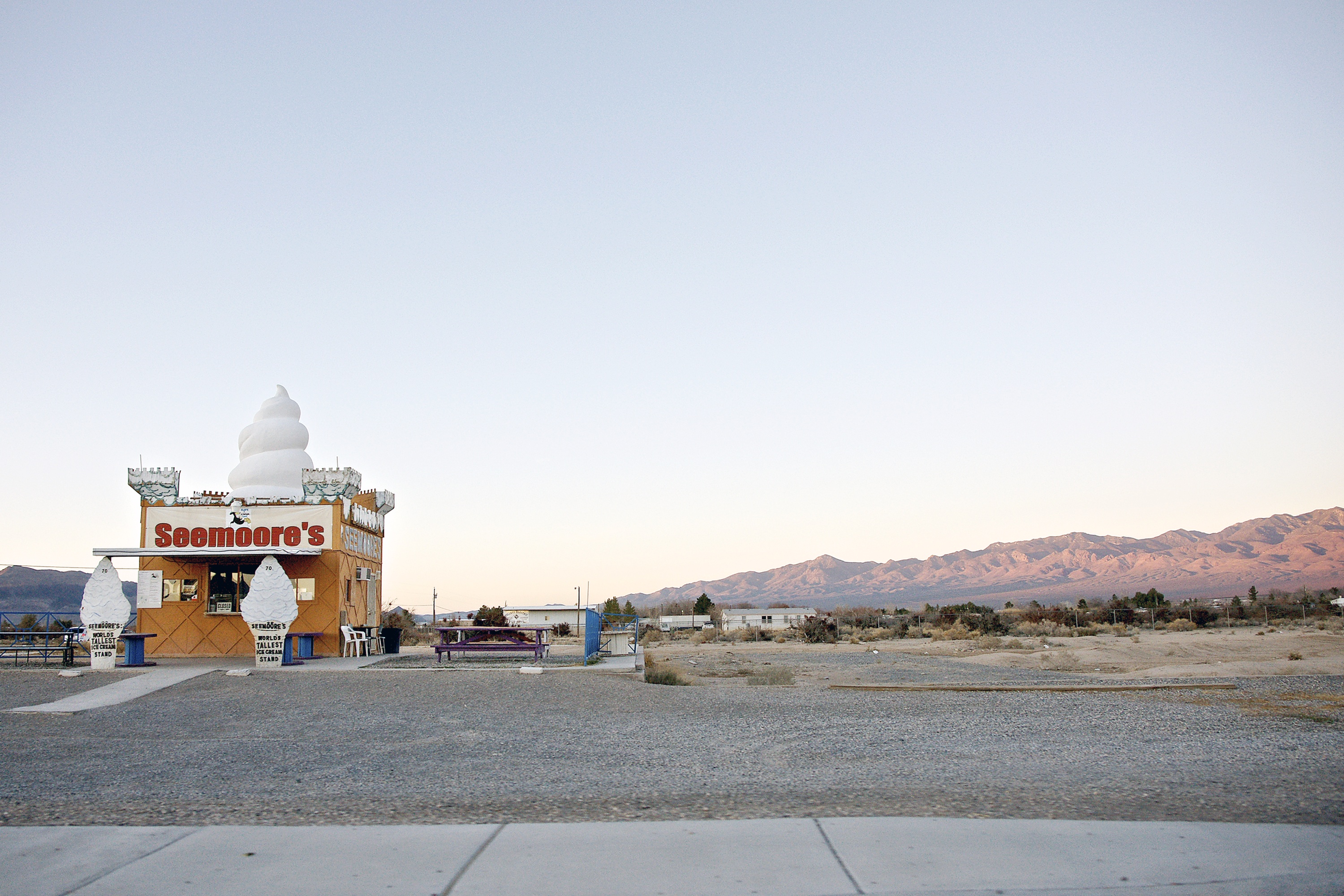
Seemoore’s World’s Tallest Ice Cream Stand
“It’s already a very tall cone, but it’s also several thousand feet above sea level along the Nevada-California border, which makes it higher!” says Leslie of Seemoore’s World’s Tallest Ice Cream Stand in Pahrump, Nevada. “This is a reference to my first visits to the U.S. from the UK as a small child in the late 1960s. It’s the type of thing that would have knocked my socks off when I was five years old. Typical of the roadside stands of the era.”
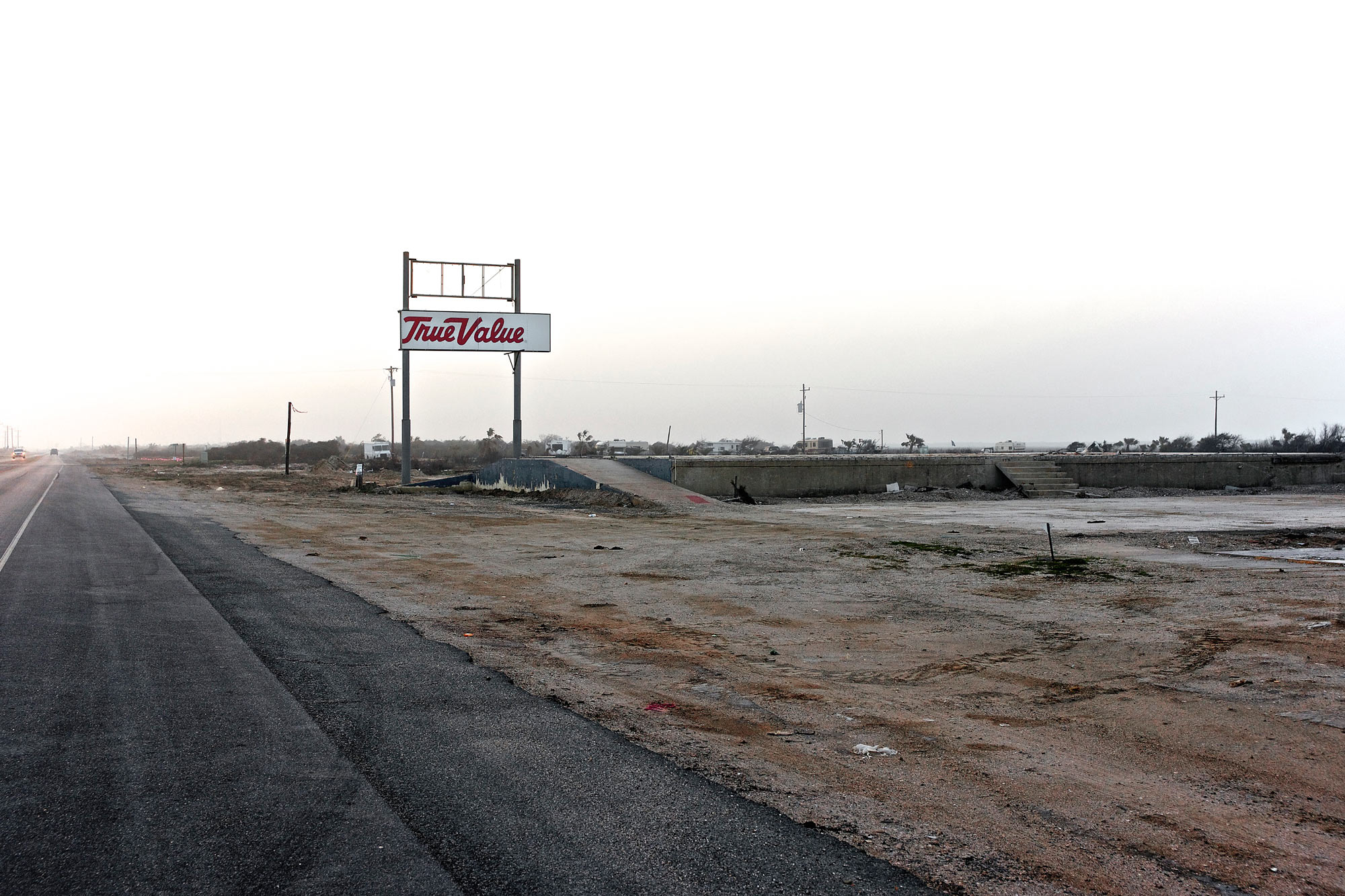
Life in a land flattened by hurricanes
“The Bolivar Peninsula in Texas was devastated by hurricanes in September 2008,” says Leslie. “The entire holiday home community was wiped off the map, littering household goods all along the peninsula. When I was on the Texas coast I went out of my way to try to find this area, but most of the roads had been wiped out. Eventually I got to a gas station, and there was a 50-year-old man at the other pump, crying. Turns out he’d had a holiday home by the peninsula. He’d heard that it’d been bad, places had been affected and damaged, but when he got there, there was nothing left of his holiday home at all.”
These photos are from Stormbelt, by Robert Leslie, with texts by TED Prize winners Edward Burtynsky and Cameron Sinclair (Dewi Lewis Publishing).
[ted id=54]
[ted id=56]










